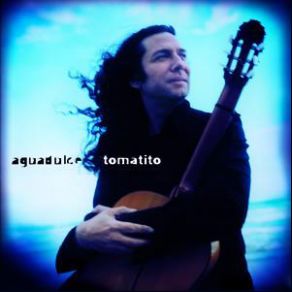Aguadulce
Download links and information about Aguadulce by Tomatito. This album was released in 2004 and it belongs to World Music, Latin genres. It contains 8 tracks with total duration of 32:24 minutes.

|
|
|---|---|
| Artist: | Tomatito |
| Release date: | 2004 |
| Genre: | World Music, Latin |
| Tracks: | 8 |
| Duration: | 32:24 |
| Buy it NOW at: | |
| Buy on iTunes $7.99 | |
| Buy on Amazon $8.48 | |
| Buy on Songswave €0.92 | |
Tracks
[Edit]| No. | Title | Length |
|---|---|---|
| 1. | Al Mariyya (Bulerías) | 3:21 |
| 2. | A Miles (Soleá Por Bulerías) | 3:45 |
| 3. | ¿Donde Está Tu Cariño? (Tangos) | 4:51 |
| 4. | Porque Tú Lo Vales (Soleá) | 4:24 |
| 5. | En Casa del Herrero (Bulerías) | 4:59 |
| 6. | Pa Salinas (Rumba) | 3:41 |
| 7. | Manduka (Bulerías) | 3:16 |
| 8. | Gallibando (Tangos) | 4:07 |
Details
[Edit]Tomatito may be setting some kind of benchmark standard for fame by association. The flamenco guitarist is known in Spain as the instrumental partner of the modern genre-defining singer Camarón during the '80s. In the current U.S. and Latin world music worlds, recognition comes for his Spain duet collaborations with pianist Michel Camilo. On the global pop scale, it arrives more indirectly for his being the father of the three singers who form las Ketchup. Aguadulce translates as "fresh water" but this is a short drink, clocking in at under 33 minutes. (More than a few flamenco artists appear not to have moved beyond LP-length CDs, something like the ten-track country CD syndrome). The opening "Al Mariyya" makes it patently obvious that it is flying fingers virtuoso display time, plus handclaps. That pretty much tells the story, with the uptempo bulerías style dominating the selections. A touch of percussion on "A Miles," his daughter Mari Ángeles Fernández Torres' vocal turn breaks up the instrumental run on "Dónde Está Tu Cariño?" and "Porque Tú lo Vales" is a solo excursion. Diego "El Cigala" drops in with two other guitars for a guest shot on the closing "Gallibando," but the track generating the most sparks is "En Casa del Herrero," with male vocalists Potito and Guadiana upping the intensity ante. This is deftly performed music fine for flamenco and acoustic guitar virtuoso fans, but not very involving for someone not already into either camp, or Tomatito as an artist himself. The big question: is anyone getting materially more music here than when Tomatito takes his guitar into an outside context, playing in an encounter of equals like, say, his collaboration with Michel Camilo?